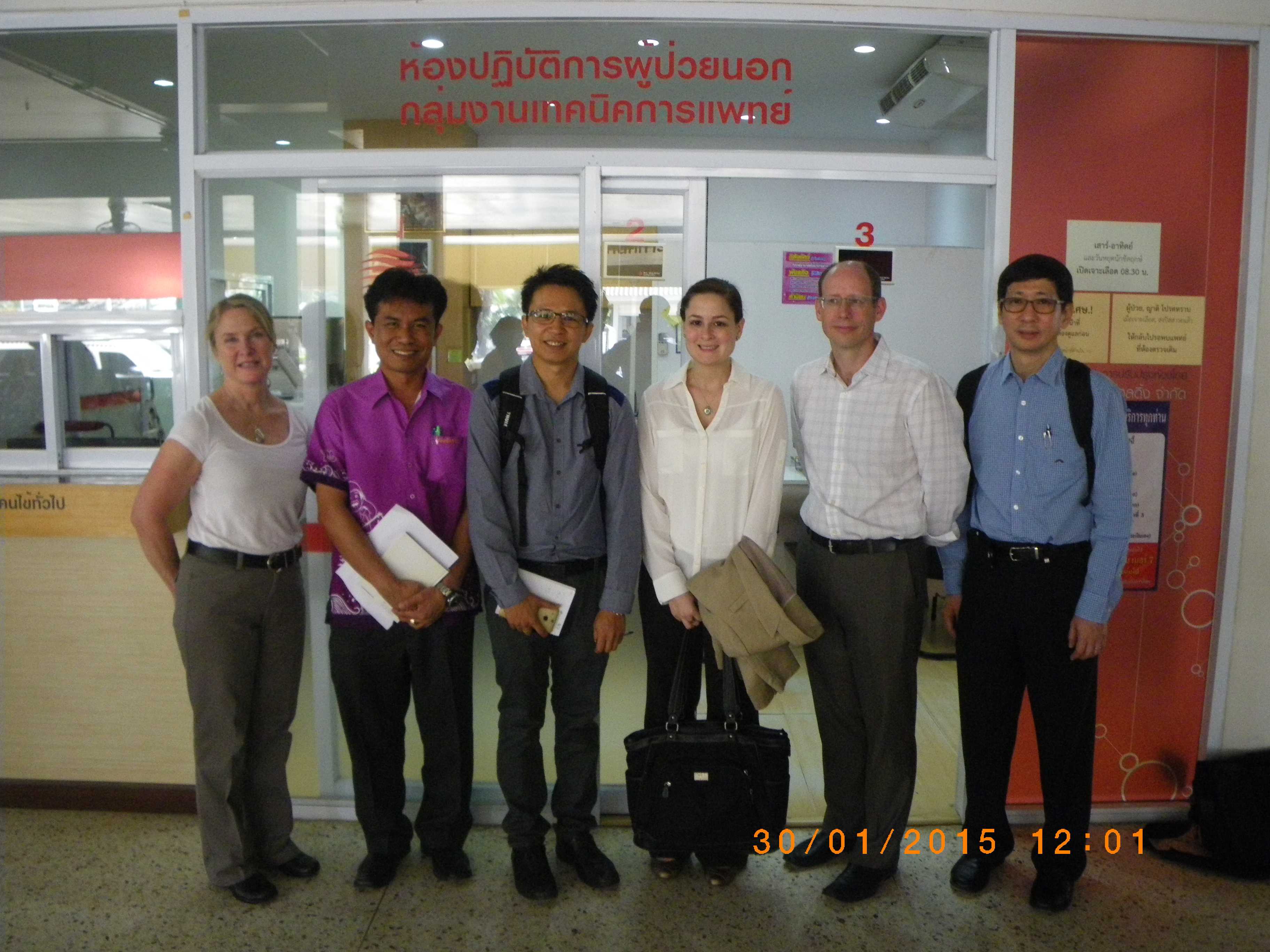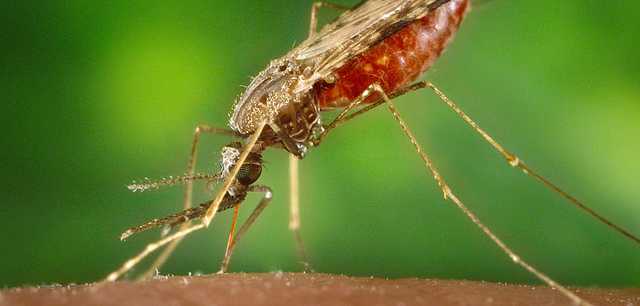Global Disease Detection Stories: Open Borders, Safe Borders—Thailand Keeps Watch for Outbreaks
Watching for diseases with the potential to spread across borders is one of the goals of the Global Health Security Agenda. Border health projects are detecting potential health threats in Thailand, using advanced molecular detection and a network of laboratories to provide fast and accurate results.

CDC and DTRA staff at a pre-implementation site visit to Mae Sot General Hospital, Thailand, January 2015.
At a hospital on the edge of Thailand, near the border with Laos, a healthcare worker examines a young female traveler complaining of fever. He knows that dengue, a mosquito-borne virus, is common in the area. But he can’t be sure. Dengue often shares symptoms with Zika virus, which is transmitted by the same type of mosquito. And then there are other possible causes to be considered – some more frightening than others.
The worker gathers the woman’s clinical information and draws a blood sample. If it’s dengue, he’ll know soon. If not, he’ll send the sample to a central laboratory in the province where they can rapidly test for antibiotic-resistant infections. If further testing is needed, the sample will travel to Bangkok, where the Thailand Ministry of Public Health maintains its central laboratory.
Prompt laboratory testing
As a result of a joint effort between the U.S. Centers for Disease Control and Prevention (CDC) and the Thai Ministry of Health, several laboratories in Thailand are now able to do molecular testing for Zika virus, possibly sparing the young woman in this scenario a misdiagnosis and unnecessary hospitalization. Eight hospitals and clinics near the borders of Laos and Myanmar will soon be screening patients with fever through this coordinated monitoring program.
It used to take a long time to receive laboratory test results because samples had to be shipped to Atlanta. In the past decade, tests themselves have gotten better, and Thailand is now able to conduct tests and give results quickly in the field. “Using advanced molecular detection means test results are ready in a matter of hours. This is a huge improvement,” says Dr. Christopher Gregory of CDC’s Global Disease Detection (GDD) program in Thailand.
Stopping outbreaks before they cross borders
Welcoming people into a country without welcoming the spread of infectious diseases can be tricky. Thailand has always been an accessible destination for businesspeople, those seeking medical care, and visitors from all parts of the world. Now, with 10 countries in the region opening their borders to free trade in December 2015 through the formation of the ASEAN Economic Community (AEC), increasing travel and trade brings a greater likelihood that diseases could spread quickly from country to country. Because of this, monitoring borders for diseases with the potential to cause epidemics is more important than ever.
Land and air travel have brought dangerous diseases to Thailand before. In 2003, the SARS epidemic reached Thailand as the region worked tirelessly to stop its spread. On June 18, 2015, a case of MERS-CoV appeared in a traveler from Oman. Other diseases with epidemic potential have also crossed into Thailand from neighboring countries, including cholera and rabies.

Dengue is caused by any one of four related viruses transmitted by mosquitoes.
In recent years, the region has seen multiple outbreaks of vaccine-preventable diseases that are rare or nonexistent in Thailand, such as diphtheria, measles and polio. Border areas between countries have also served as reservoirs and amplification points for antimicrobial-resistant diseases like drug-resistant malaria. There exists a very real possibility that diseases like these could cross into Thailand and spread.
Fortunately, Thailand has been strengthening their disease tracking systems for over a decade. In 2015, Thailand’s GDD Center wrapped up a pilot project on the Laos Border in one provincial hospital and three district hospitals, collecting data on hospitalized patients who experienced a sudden onset of severe fever (also called acute febrile illness). In 2016, the project will expand to include Tak province on the Myanmar border, and laboratory testing in all sites. This border health project will improve pathogen and outbreak detection in border areas, determine the burden of high priority diseases, evaluate diagnostic tests, and enhance laboratory capacity.
Relationships are key
A thirty-five year history of trust and collaboration between the Thai Ministry of Health and CDC makes it easier to overcome challenges.
Partnerships are at the core of protecting Thailand’s borders from infectious diseases. In hospitals and clinics along the Thai border, ministry staff identify eligible patients, collect clinical information, transport and test samples, and provide results back to clinicians. CDC provides technical and financial assistance for project design, implementation, and data interpretation. The U.S. Defense Threat Reduction Agency provides essential financial and logistical assistance.
Thirty-five years of collaboration between the Thai Ministry of Health and CDC have fostered a sense of trust that makes it easier to overcome challenges that arise, like how to share data while maintaining confidentiality or how to meet timelines while respecting each organization’s needs. Clear and frequent communication between partners is vital to the program’s success.
At a hospital on the border of Laos, a young woman waits for a diagnosis. Thanks to coordinated monitoring efforts like these, she will soon have an answer, and Thailand can continue to identify and contain infectious diseases before they become epidemics.
The project receives support from the U.S. Defense Threat Reduction Agency and is conducted in partnership with the Thai Ministry of Health. This work is coordinated through the GDD Center in Thailand, which is part of CDC’s country office. Thailand is one of 30 U.S. partner countries named in the Global Health Security Agenda.
- Page last reviewed: December 11, 2015
- Page last updated: December 11, 2015
- Content source:


 ShareCompartir
ShareCompartir